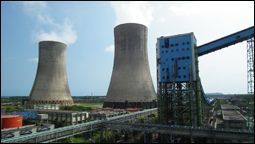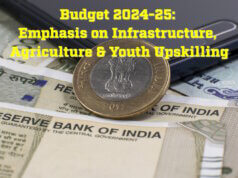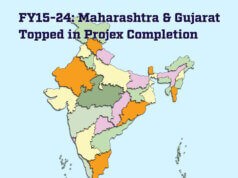
Partner
KPMG in India
There is hope that with a stable government at the Centre, there would be greater thrust on policy enhancement and execution. Coal will continue to be the mainstay of power generation in India. The challenge will be to remove the obstacles, integrate with other sources including non-conventional ones, and ensure sustainable growth of the sector through policy and practice enhancement, writes Santosh Kamath, Partner, KPMG in India.
Energy is central to our progress and electricity as a source of this energy is undisputedly the most efficient. It drives not only industries and services, necessary for the growth of economies, but is also essential for people to live a dignified life. This is more so relevant in developing countries like India where the annual per capita consumption of electricity was just above 900 KWh in FY13-14 as against a global average of around 3000KWh.
In India, thermal power (consisting of coal/lignite, natural gas and diesel) constitutes 69 per cent of total installed capacity and is likely to remain the dominant source of energy in the foreseeable future with coal-based plants alone contributing more than 85 per cent of installed thermal power capacity. The government is targeting a capacity addition of 88 GW in the 12th (2012-17) Plan and envisages another 100 GW in the 13th Plan (2017-2022). The share of thermal plants in the 12th Plan is targeted at 88 GW leading to an annual per capita consumption of electricity over 1400 KWh by 2017.
 Coal as a backbone of power generation has been accepted in India for the ease of its availability, low cost of production and availability of technologies allowing large capacity additions per unit of installation. The challenge to these plants has been concerned around their impact on the environment viz. mining-related factors, spillage during transportation, high ash content of Indian coal, and high sulphur content of imported coal and emissions. Solutions like coal gasification, location of plants at pithead and dedicated freight corridors are at various stages of implementation.
Coal as a backbone of power generation has been accepted in India for the ease of its availability, low cost of production and availability of technologies allowing large capacity additions per unit of installation. The challenge to these plants has been concerned around their impact on the environment viz. mining-related factors, spillage during transportation, high ash content of Indian coal, and high sulphur content of imported coal and emissions. Solutions like coal gasification, location of plants at pithead and dedicated freight corridors are at various stages of implementation.
The improvement in technology has also led to increased efficiencies and lower environmental impact. Supercritical technology is already available and ultra-supercritical units are now being offered to further enhance the value of coal generation. In years ahead, even though we could see a reduction in percentage terms of the contribution of coal plants to the overall installed capacity, a large increase in absolute capacity is unavoidable.
Gas plants, even though more environment friendly, have been sub-optimally utilised. A majority of gas plants are idle and those that are operating are doing so at a PLF as low as 25 per cent. Due to their short start and stop times, gas plants are ideally suited for peak load operations. However, high cost of LNG imports, reduction in domestic gas supply and uncertainty over gas pricing has currently made this option unattractive. What is required is a quick resolution on the demand for increase in gas prices which could sustain further exploration and supply supplemented with an equitable policy on LNG imports.
Relatively, coal has advantages of vis-à-vis other sources of power generation. However, it has been plagued with multiple administrative and management weakness. These include:
* Low plant load factor (66 per cent for FY2013-14 as compared to 72 per cent for FY2012-13) due to both supply side and demand side issues.
* Non-availability of fuel to already existing plants due to inability of CIL to supply the annual contracted quantity (ACQ) as per fuel supply agreement (the penalty clause is applicable only if supply is less than 65 per cent of ACQ).
* A large percentage of domestic and agricultural consumers do not have the ability or desire to pay resulting in an imposed reduction on supply by distributors. Further, financially weak discoms with high indebtedness (the accumulated debt of all discoms is estimated to be more than Rs. 2 lakh crore) has resulted in default in payment to generators.
* T&D infrastructure is inadequate and inefficient to provide power to regions and consumers with the ability to pay and there are large AT&C losses of over 24 per cent.
* An uncoordinated government machinery requiring developers to struggle for clearances.
* An evolving regulatory framework on issues of land acquisition, R&R increasing risks of viability of projects.
* New players in the sector without the required expertise to build such plants.
* Lack of good project management skills resulting in cost and time overruns and suspension of works in many cases.
* A large number of technology suppliers without well-defined criteria for quality that results in their inability to meet performance parameters.
* An underdeveloped infrastructure for transportation, limiting choice of sites, damages and delays.
Considering the crucial role power sector plays in the growth of economy, immediate redressal of and decisive action on the above mentioned points is a necessity. The prospects for the sector are promising going by some of the developments in recent times as mentioned below.
* Creation of a national grid: integration of the southern grid with the other four regional grids (already operating in a synchronous mode) is completed. Further, 25 per cent of the total targeted 10000ckt km of transmission line projects (in 12th Five-Year Plan) have already been completed as of December 2013.
* Renewed interest by foreign investors in power sector as reflected by picking up of equity stakes by them in Indian power companies. Further, there has been progress on policies to strengthen the PPP model for encouraging private participation.
* Approval of a debt restructuring plan to improve financial health of discoms.
* Work on multiple dedicated freight corridors to ensure rail connectivity with ports and enhance capacity for fuel transportation.
Enhancement of production plans of CIL and its subsidiaries through technology enhancement, privatisation and consistent environmental policies, favourable import policy, and pricing strategy to balance the cost of imported and domestic coal.
The government has attempted to improve the efficiency of old coal-based plants through renovation, modernisation and life extension (R&M & LE) programmes.
* Rationalisation to synchronise tariffs for generation and distribution companies.
* Implementation of a uniform and transparent land acquisition and R&R framework.
There is hope that with a stable government at the Centre, there would be greater thrust on policy enhancement and execution. Coal will continue to be the mainstay of power generation in India. The challenge will be to remove the obstacles, integrate with other sources including non-conventional ones and ensure sustainable growth of the sector through policy and practice enhancement.
(The views and opinions herein are those of the author and do not necessarily represent the views and opinions of KPMG in India. All information provided is of a general nature and is not intended to address the circumstances of any particular individual or entity.)











